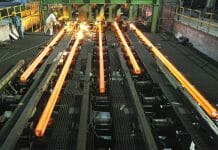More than half a year into Singapore’s Heightened Safety Period (HSP) imposed by the Ministry of Manpower, it was announced that it would be extended by a further three months till 31 May 2023 – with stronger measures. Notably, Singapore’s annualised major injury rate per 100,000 workers increased from 16.8 to 18.7 last year, with the Transportation & Storage sector’s major injury rates worsening during the HSP. This was one of the major concerns in the prompting its extension.
Warehousing plays a huge part within the Transportation & Storage sector in acting as its logistical hub. Huge real estate, high verticality in storage, and heavy machinery are just some factors that potentially lead to workplace injuries in warehousing. To counter this, proper planning and the practice of safety measures can mitigate the likelihood of accidents and injury. Here, we look at different ways to reduce workplace injuries within warehouses.
Identify Risk Points where Accidents Happen
Recognising potential risk points within a warehouse is pivotal in reducing potential workplace injuries. Doing so will help to prevent accidents, injury, death, damage to the warehouse, and downtime. For example, some of these risk points can include flammable liquids, sites that require the cutting and opening of boxes, elevated work platforms, and narrow aisles.
After their identification, warehouse managers and engineers can then pay special attention to these hazards and act on them. Strategies and safety guidelines can be derived to help minimise and potentially eliminate these risks posed towards workers that will bolster safety within the warehouse.
Implementing Safety Plans and Procedures
Simply identifying the risks does not guarantee the safety of workers within a warehouse. The next course of action will be the Implementation of safety plans and procedures, taking the identification said risks one step further, and will enhance the safety of workers. These plans and procedures must protect workers from warehouse hazards and allow them to carry out tasks safely.
For instance, warehouses can mandate good practices when going about the work day. If content is stashed in vertical segments, the use of a stable ladder to prevent falls will be essential to prevent any falls from height. With different hazards scattered around the warehouse, training workers on the proper use and care of personal protection equipment will drastically decrease the likelihood of them sustaining injuries from being ill-equipped with the correct gear. Safety guidelines when operating heavy machinery such as forklifts should also be mandated, ensuring that workers take preventive steps in being safe while manning potentially hazardous yet essential equipment.
The Company Emergency Response Team
In the case of an emergency within the warehouse, it will still take first responders time to reach the facility. This is where the Company Emergency Response Team (CERT) comes into play. CERT is a group of in-house first responders identified by a company to be competently trained in preventing any emergency into a full-fledged disaster. A warehouse’s CERT must be capable of containing the threat by efficiently mitigating an emergency situation according to the company’s Emergency Response Plan, executing the procedure effectively to contain the threat.
The CERT will ensure the immediate health and safety of workers, and the keeping of order will ensure the business operates smoothly during emergencies till the firefighters and ambulances arrive on site. To ensure a competent CERT, the team should carry out fire drills at least twice a year, and demonstrate to workers exit routes along with assembly points for safe evacuation based on the company’s Emergency Response Plan.
Goods-to-person Automated Storage System For Reduced Risk of Fire & Injuries
As traditional warehousing comes with its aforementioned risks, adopting Automation and a cube-centric warehouse can solve these issues. For example, technology company AutoStore harnesses the usage of warehouse robots in an Automated Storage and Retrieval System (ASRS) comprising of a dense cubic layout of high-rise storage bins. These Bins are stacked directly on top of each other and are solid-walled. AutoStore design limits the amount of air inside the system, resulting in a slow growth rate while forcing the fire to grow vertically – should a fire break out within the system. This is important because a fire that grows skyward will trigger ceiling-level sprinklers to suppress its development at an earlier stage, preventing massive damage.
Additionally, the system makes use of these robots which travel along the storage’s grid system located at the top of its structure to retrieve content and deliver them to workers manning the system’s workstation. In turn, this system helps grant greater flexibility of the warehouse’s layout, and eliminates risk factors associated with heights, heavy machinery, as well as narrow aisles. In fact, this is supported by a 2023 study conducted by the Bank of Korea, where it was found that injury rates tend to be smaller in regions strongly exposed to robots, especially with large effects for permanent disability cases. It was found that robot exposure reduced workplace injury by 8%, primarily due to them doing hazardous and physically demanding tasks to improve workers’ health.
Conclusion
The creation of a safe and productive warehouse starts from the top down, and the construction of a culture of safety. This should be reinforced by owners down to the workers, starting with basic identification to the construction of proper safety procedures and plans in place. From then onwards, owners can explore avenues to potentially boost both the warehouse’s productivity and safety through various means. The management should be expected to invest resources in both time and finances toward safety and absorb it into the overall budget. Safety of workers is paramount, and the attention to detail will help with the reduction of workplace injuries.
By AutoStore Director of Business Development (Southeast Asia) Clement Yew









